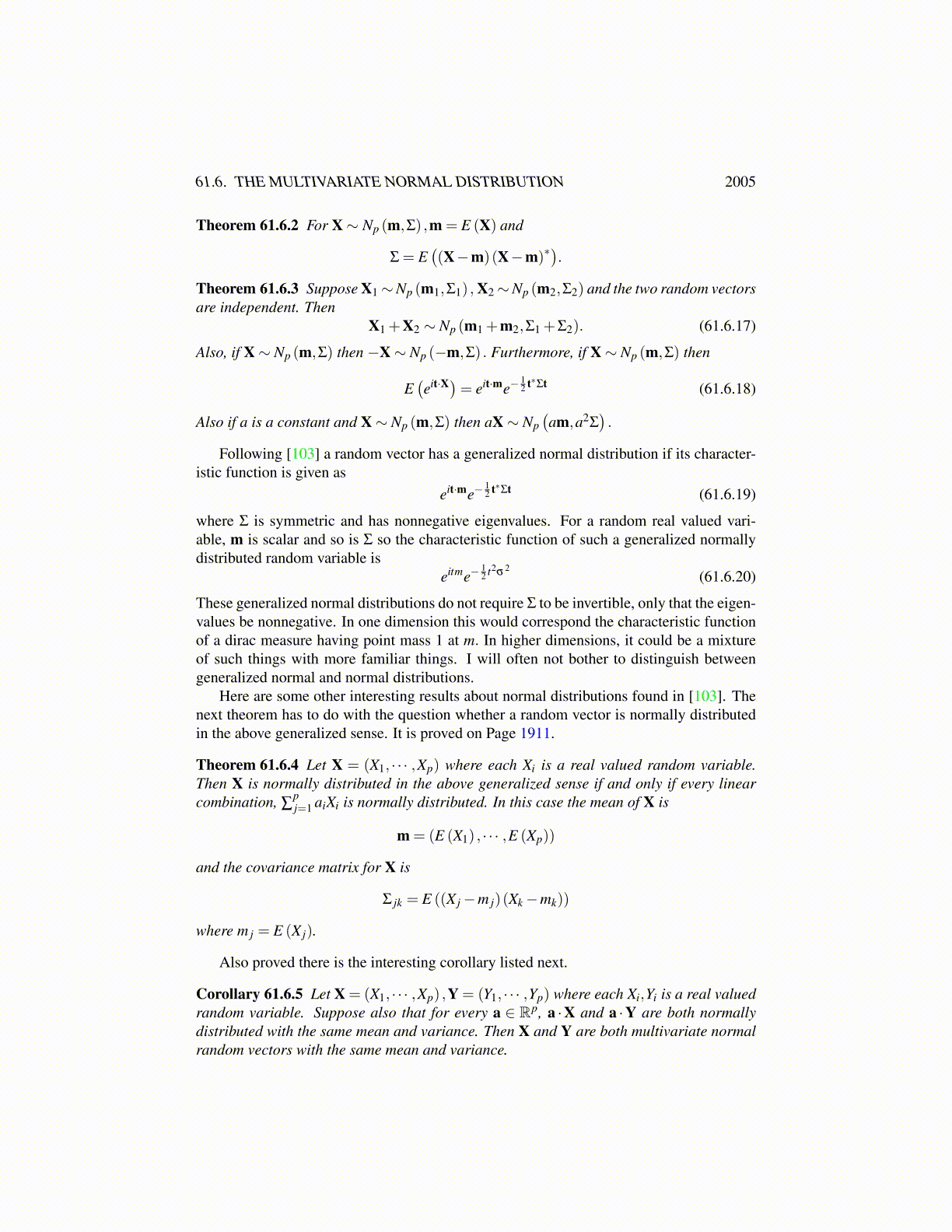
61.5. BOCHNER’S THEOREM IN INFINITE DIMENSIONS 2005
Next suppose the conditions hold. Define for t ∈ Rn and {y1, · · · ,yn} ⊆ Λ
ψ{y1,··· ,yn} (t)≡ ψ
(n
∑j=1
t jy j
).
Then ψ{y1,··· ,yn} is continuous at 0, equals 1 there, and is positive definite. It follows fromBochner’s theorem, Theorem 59.21.7 on Page 1943 there exists a measure µ{y1,··· ,yn} de-fined on the Borel sets of Rn such that
ψ
(n
∑j=1
t jy j
)= ψ{y1,··· ,yn} (t) =
∫Rn
eit·xdµ{y1,··· ,yn} (x) . (61.5.16)
Thus if{
y1, · · · ,yn,yn+1, · · · ,yp}⊆ Λ,
ψ
(n
∑j=1
t jy j +p−n
∑j=1
s jy j+n
)= ψ{y1,··· ,yp} (t,s)
=∫Rp−n
eis·x∫Rn
eit·xdµ{y1,··· ,yp} (x)
I need to verify the measures are consistent to use Kolmogorov’s theorem. Specifically, Ineed to show
µ{y1,··· ,yp}(A×Rp−n)= µ{y1,··· ,yn} (A) .
Lettingλ (A) = µ{y1,··· ,yp}
(A×Rp−n)
it follows ∫Rn
eit·xdλ =∫Rp−n
∫Rn
eit·xdµ{y1,··· ,yp} (x)
=∫Rp−n
ei0·x∫Rn
eit·xdµ{y1,··· ,yp} (x)
= ψ
(n
∑j=1
t jy j +p−n
∑j=1
0y j+n
)
= ψ
(n
∑j=1
t jy j
)=
∫Rn
eit·xdµ{y1,··· ,yn} (x)
and so, by uniqueness of characteristic functions,
λ = µ{y1,··· ,yn}
which verifies the necessary consistency condition for Kolmogorov’s theorem.